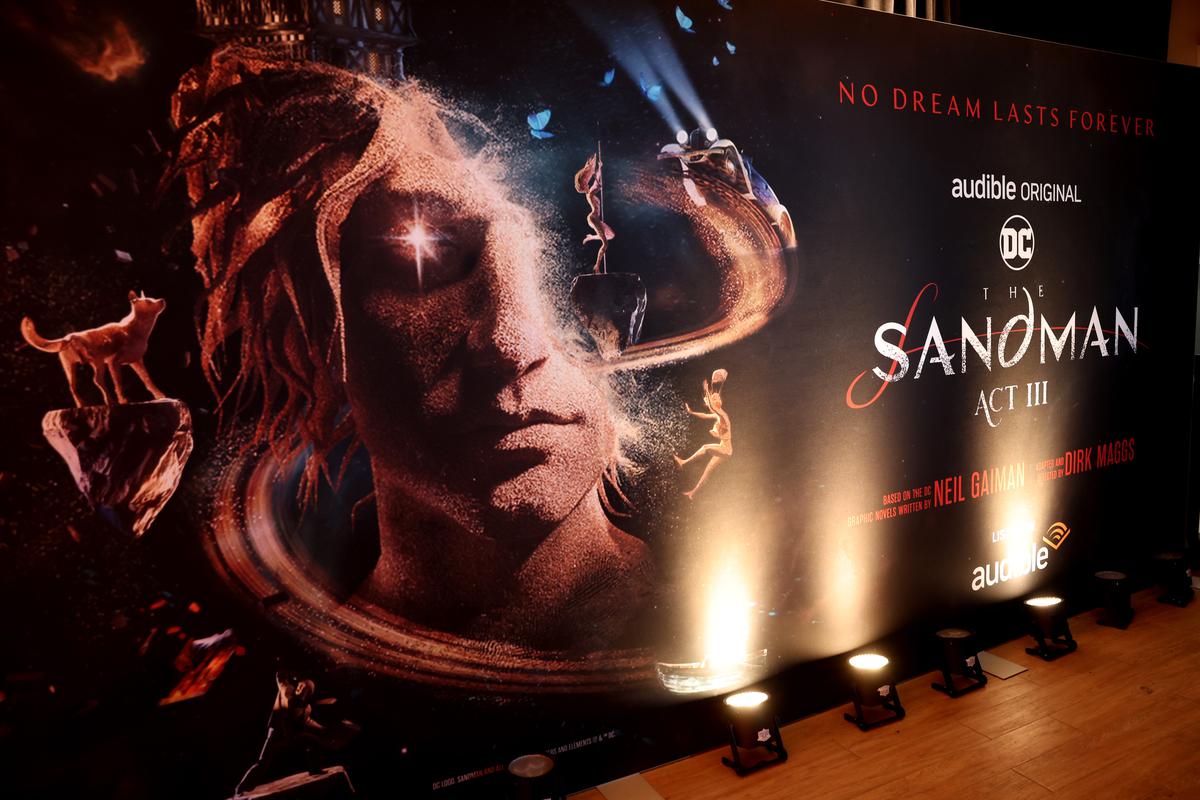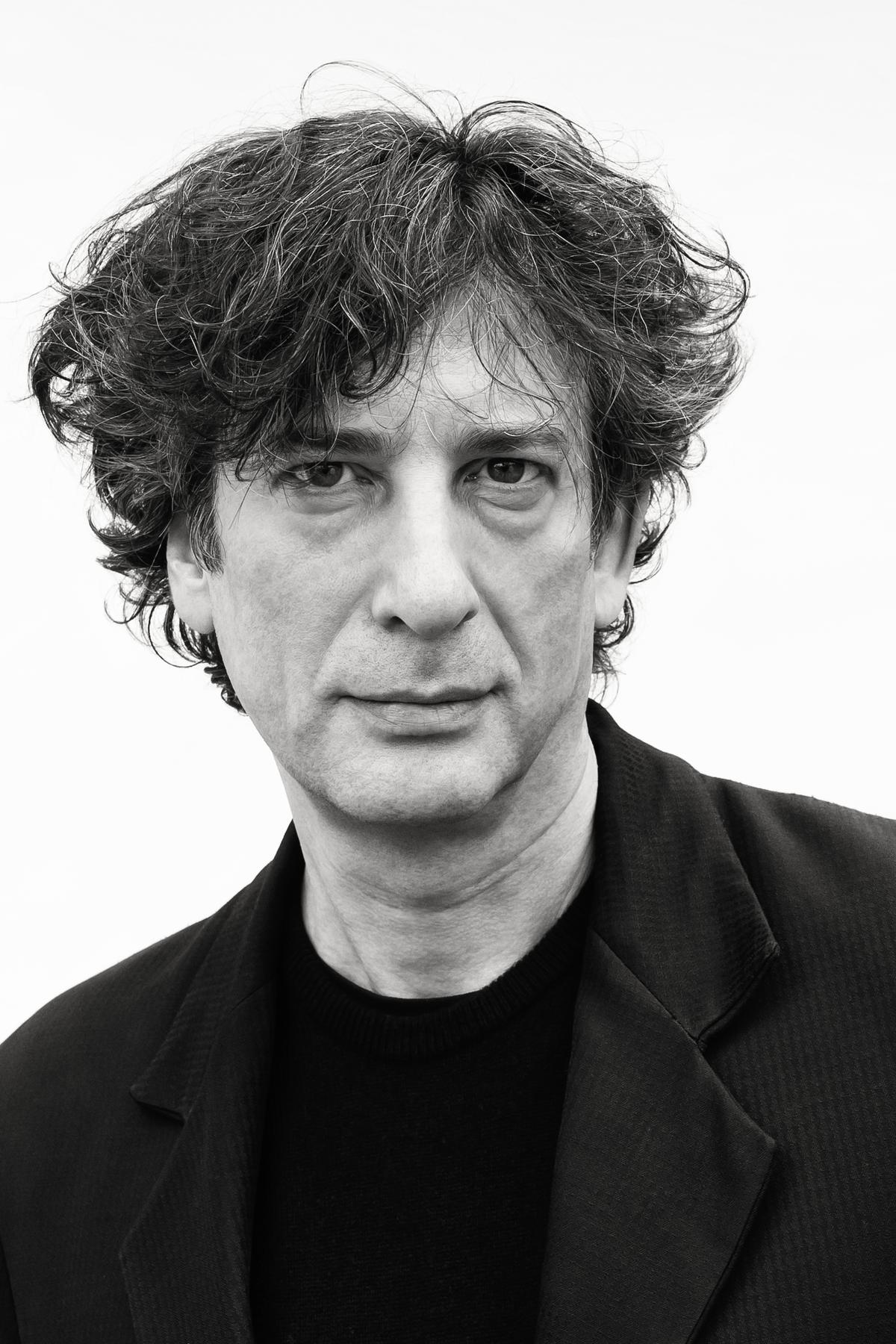[ad_1]
Listening to the audiobooks of Neil Gaiman’s The Sandman, makes for the perfect Eureka moment. As you listen to the all-star cast taking you on a mind-bending trip, you tell yourself, of course this is a home for Dream’s travels through time and space.
Translating comic books into sound, while not being easy, is a joy, according to Dirk Maggs (67), the director of the audiobook adaptations. “It wasn’t hard because the two media complement each other,” he says over a video call from his home in Winchester, UK.
Maggs, who was a panelist at the recently held Delhi Comic Con held from December 9 to 11, says, “The story sits in the middle. On one side, you can have pictures drawn by great artists, and on the other, I provide the soundtrack; the voices to the characters. I’m not battling these two elements, I’m augmenting them.”
Fraction of the cost
The reason audiobooks and comic books are complimentary is because you can do anything in audio for the fraction of the cost of doing it in movies, says Maggs. “Marvel has turned its product into this gigantic series of movies, which cost millions of dollars with special effects and top actors. Well, we have Hollywood actors, huge sound effects and a brilliant score by an award-winning composer (Jim Hannigan) for the price of a day’s catering on a Marvel production!”
Another plus in an audio adaptation, Maggs says, is that unlike a movie, the audience is a partner in the enterprise. “We don’t treat them as objects and show them stuff. We let them walk into this world that we have created and populate it with their imagination.”
Back to the mother lode
Earlier this year there was an excellent Netflix adaptation of the comic books headlined by Tom Sturridge. “I had actually started writing the first episode the audiobook when I heard that Netflix was doing a series. I immediately tore up what I’d done and started again because I knew the series was going to change stuff.”

In a show, Maggs says, there are a vast number of people influencing the storytelling process. “I realised, with all these people affecting a television series, I had to go back to the mother lode and concentrate on the original stories as written by Neil back in 1989.”
The audiobook, Maggs says, is the original version of The Sandman. “The TV show is a 2020s version of how Neil would tell the story today. I haven’t watched the series and I’m not going to, not because I don’t think it is brilliant but because I don’t want my vision of it, which is Neil’s original vision, changed in any way.”
Enter, The Sandman
A mutual friend, Phyllis Hume, introduced Maggs to The Sandman. “Phyllis worked for DC Comics in New York when I was making Superman stories for BBC Radio. She would tell me what was the latest thing DC were publishing. One day she said, ‘you must read this thing called The Sandman’ and sent me the first three collected editions.”
So while he was making Superman, which Maggs describes as a straightforward, popular superhero story, he was reading this new and completely different comic book storytelling style. “It opened my eyes to a different way of making stories of graphic novels. It was mythology, both classical and invented, with characters that were not necessarily heroic or likeable, but compelling.”
Maggs had wanted to do an audio adaptation right away and pitched it to the BBC. “This was 30 years ago, and the BBC weren’t aware of Neil then. They did not go ahead with the project and The Sandman was put on the backburner.”
Life, the universe, and everything

Neil Gaiman
Gaiman and Maggs had a mutual acquaintance with Douglas Adams, the writer of The Hitchhiker’s Guide to the Galaxy. “He mentored us separately, Neil as a writer and me as a radio producer. Douglas heard my work and asked if I could bring Hitchhikers back home to radio. I was at his door before he put the phone down!”
In 2012, Gaiman was a guest voice on a stage tour of The Hitchhiker’s Guide to the Galaxy. Maggs first worked with Gaiman on an adaption of his Neverwhere, a novel about a world under London. “It was quite clear at that point that we were very much on the same wavelength in terms of how storytelling can be visual and graphic, even though it is in audio. It has remained that way ever since. Audio is a visual medium and I create pictures in sound.”
Method in the madness
Gaiman’s method of grouping stories in The Sandman is idiosyncratic, says Maggs. “It defies conventional division. He wrote certain groups of stories that run together and also wrote one-off stories like Calliope, and A Midsummer Night’s Dream. All of them either directly or peripherally involved Dream, Lord Morpheus of the Endless. And so, we have 75 comic book issues, which divide themselves into groups, comprising long-form and individual stories.”
Maggs says he followed the simplest way of dividing up the stories. “There are four volumes of what is called The Absolute Sandman. Our division into acts in audiobook, conforms to how The Absolute Sandman works.”
Sounds good
The ensemble cast includes James McAvoy, Kat Dennings, Taron Egerton, Michael Sheen, Riz Ahmed and Andy Serkis with Gaiman narrating. The Hindi language version is equally star-studded with Tabu taking the role of the narrator and Manoj Bajpayee playing Dr. Destiny.
The casting process, Maggs says is tricky. “You are giving voices to characters which didn’t have voices up to this point. As the narrator, Neil is warm and authoritative. He is your guide through the story. In the same way, Tabu comes in with this dignified, warm and safe presence. She is someone into whose hand you slip your hand as they lead you through scary places.”
On a dime
Dr. Destiny, Maggs comments is a character who can seem gentle and sweet. “He can turn on a dime into a homicidal maniac, literally a nightmare. Manoj absolutely nails that turnaround.”
Morpheus, Maggs says is one of the seven siblings, the Endless, who are the anthropomorphic personifications of abstract concepts. “I have to remember that carefully because it is a long word (laughs).
Dream role
McAvoy and Maggs talked through Morpheus’ character over video call. “He was in his kitchen and I was in my office. We arrived at a Morpheus who is not a friendly person. He can be generous and kind as well as cruel and callous. James’s Morpheus is enigmatic, detached, occasionally sulky, occasionally selfish, and sometimes generous and caring.”
Michael Sheen’s Lucifer is low key, says Maggs. “Genuine evil can be almost dull, with bad things happening under the surface. The psychic investigator, John Constantine, is cheeky, sleazy and laid-back and played by Taron Egerton who is young and cheeky, and, you like him even though he is a little bit of a villain.”
Not a grim reaper
In The Sandman, Death is not what you expect, says Maggs. “Death in traditional western literature, is a sinister character, a hooded figure with the monk’s robe with the scythe. In Neil’s universe, Death is a teenage Goth girl, punky and cheeky. Death is literally the last thing you expect as in life itself. We have Kat Dennings playing Death with a combination of passion, spirit, sympathy and playfulness.”
Desire, another of the Endless, is a difficult one, Maggs says. “Desire is non-binary, neither male nor female. Desire sits in the center and is attractive to all genders. Desire can be both attractive and repulsive and Justin Vivian Bond nails the sound of Desire.”
In the last 10 years, actors have become more aware of the power of audio, says Maggs. “It does not do any harm that The Sandman has been a New York Times bestseller, three years in a row. In India, though you still have a storytelling tradition and the language of sound is understood.”
The Sandman in English and Hindi is available on Audible.in
[ad_2]
Source link


